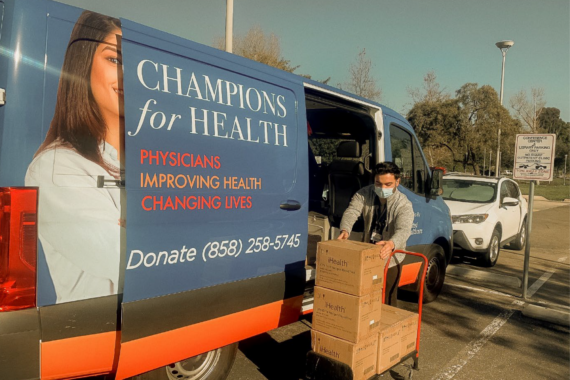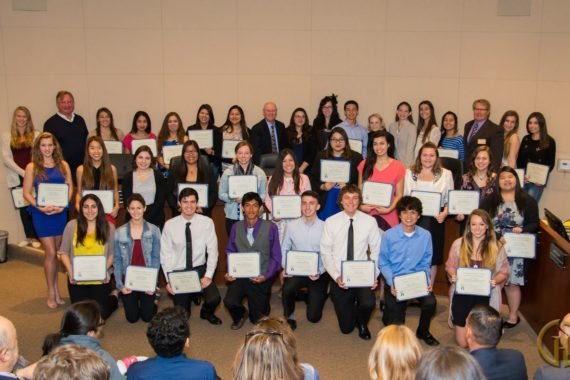Relationship Trauma: Prevention, Education, and Empowerment
May 27, 2021 General
Center for Community Solutions is a nonprofit whose mission is to end relationship and sexual violence by being a catalyst for caring communities and social justice. Their prevention programs use education as a tool to break the cycle of violence and prevent violence before it happens. CCS believes that violence is preventable: violence is a learned behavior and therefore can be unlearned. Generally, their prevention programs strive to empower participants with the skills and tools they need to prevent violence in their relationships and communities. You can learn more here.
Karla Sanchez is a licensed marriage and family therapist at Center for Community Solutions. We asked her some questions about trauma, relationships, and healing as a resource for you or a loved one.
How do you define trauma in terms of relationship and sexual violence?
Trauma is the body’s normal response to abnormal events, and often symptoms can be explained in biological terms. In this context, individuals experience abuse in the form of sexual assault and/or intimate partner violence. Trauma responses may look different for everyone, as the individual’s way of coping, internal resources, and support system may differ. While some experience great impairment in their daily lives such as loss of sleep, high anxiety and hypervigilance, or depressive symptoms, others only notice the impact when the trauma is specifically discussed or triggered. It is important to note that trauma in these victimizations can happen to anyone, regardless of their age, sex, gender and/or socioeconomical status. Trauma is a public health concern that impacts everyone in the community.
Are healthy, unhealthy, and abusive relationships easy to identify, especially when you’re in one? How do you identify them?
Unhealthy abusive relationships are not always easy to identify, especially when you’re in the relationship. Victims of abuse may take months or even years to recognize and acknowledge the abuse in their home or relationship. Healthy dynamics are most commonly identified when people report ongoing feelings of safety, validation and effective communication. On the contrary, an unhealthy or abusive relationship can cause the victims high levels of stress, fear, and constantly feeling unsafe or like they are walking on eggshells. Furthermore, if the violence escalates, folks may only then realize their physical, emotional, and psychological boundaries are consistently being violated. This may look like pushing, pinching, minimizing their feelings, and gaslighting. Often emotional, verbal, and financial abuse is minimized and explained away, even though these are all forms of abuse as well.
How do you set healthy boundaries in relationships?
Boundaries are a crucial component of healthy relationships. Boundaries begin within ourselves and by building self-awareness. Boundaries are defined by what they mean to the individual and how appropriate they are in one setting. Such limits may also be impacted by influenced cultural factors, such as family and community. Healthy boundaries are best set in the beginning of the relationship, opening a conversation to discuss interests and expectations. Healthy boundaries also come with a consequence if they are violated, and these are often difficult to enforce in abusive relationships.
Are there communities more vulnerable to experiencing relationship trauma?
One of the biggest misconceptions of intimate partner violence is to think that one specific community is more vulnerable than the other. In my experience, I would say all populations and communities are at risk of violence in a relationship. However, the degree of violence and healing process may look different for everyone. Certain variables such as socioeconomic status, gender, ethnicity and race may allow individuals to have better access to medical care and/or support from law enforcement. Nevertheless, intimate partner violence can occur in all communities and to people of all genders and age.
Do you have any recommendations for intervening safely when someone you know is in an unhealthy relationships?
It is recommended to assess the person’s openness to discuss or even admit abuse is happening in their relationship. The most important thing is to meet the person where they are in their process. If you notice the person is open and willing to have a conversation about their situation, you can start by asking them how you can be of support or what they are needing from you in that moment. Some victims are not interested in leaving the relationship, due to fear, financial hardship, or countless other factors. Therefore, it is crucial to become a person of support or an ally, instead of offering unsolicited advice that may drive them away. Just be there, listen, and validate their feelings.
What is the starting point in healing trauma? Is it different for everyone you see?
Trauma recovery looks different for everyone, and everyone may have a different starting point. The most important step to take towards healing, is assessing readiness and willingness to initiate the journey. It is OK to take your time until you are ready to ask for support in healing. Many people also take different steps aside from or in addition to therapy, such as reading, trainings, workshops, or church.
With that said, one of the starting points I consider with my bicultural population is the impact language, education, and culture in their healing journey. Culture plays an important role in recovering from violence. Asking open-ended questions, having a cultural humble approach to their stories, and utilizing language that they are comfortable with, is crucial to providing trauma-informed services.
Are there preventive techniques that can be taken to reduce the chance of trauma for future generations?
Education is key to prevent abuse. When we educate our communities and our families, we increase their knowledge and awareness of what abuse may look like, red flags and the cycle of violence. In addition, individuals also learn about ways to increase their safety, resources available for support and how to reduce the risk of revictimization. Decreasing the stigma to accessing mental health resources is essential to prevention, if folks feel comfortable and confident walking into a therapy office, hope, healing and support is possible.
About Karla Sanchez
Karla Sanchez is a licensed marriage and family therapy (LMFT) who began her work at CCS as a practicum student in 2016 and returned to the agency as staff in 2018. Karla works out of the El Cajon office, offering services to clients in English and Spanish to victims of Sexual Assault and Intimate Partner Violence. Karla also has a background as a licensed therapist in Mexico and joined the mental health field in the United States in 2012. Karla has also worked as a case manager for families involved in the juvenile court system, assisting youth in juvenile detention facilities and working as a therapist with minors at risk of sexual exploitation and human trafficking. Karla has dedicated her career to providing trauma informed care to the community, and is passionate about services folx who encounter barriers to support and services.





